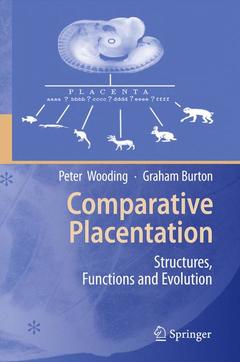Description
Comparative Placentation, 2008
Structures, Functions and Evolution
Authors: Wooding Peter, Burton Graham
Language: French
Subjects for Comparative Placentation:
Keywords
Comparative; Function; Placentation; Structure; Vertebrate; endothelium; evolution; physiology
Publication date: 11-2014
301 p. · 15.5x23.5 cm · Paperback
263.74 €
Subject to availability at the publisher.
Add to cartPublication date: 08-2008
301 p. · 15.5x23.5 cm · Hardback
Description
/li>Contents
/li>Comment
/li>
Science produces fascinating puzzles: why is there such a range of placental structures when other mammalian organs are so structurally uniform ? Why and how did the different placental structures evolve ? Comparative placental studies can facilitate the identification of the common factors in placental growth, differentiation and function and their relevance to possible evolutionary pathways. Comparative Placentation is the only book presenting up-to-date data illustrating the great variety of structure but uniform function of vertebrate placentas from fish to man. This information is essential for selection of suitable models to investigate particular practical problems of impaired or anomalous growth in human and animal placentation. The unique collection of the best light and electron micrographs from the last thirtyfive years which precisely illustrate the structural range in each taxon, make the book the most authoritative publication in this field and a vital source of information for anyone interested on reproductive physiology, anatomy and medicine.
The only concise presentation at present of the structural variety of vertebrate placentas and coherent discussion of how and why this range evolved
Provides the unique collection of the best Light and Electron micrographs from the last 35 years which precisely illustrate the structural range in each vertebrate taxon




